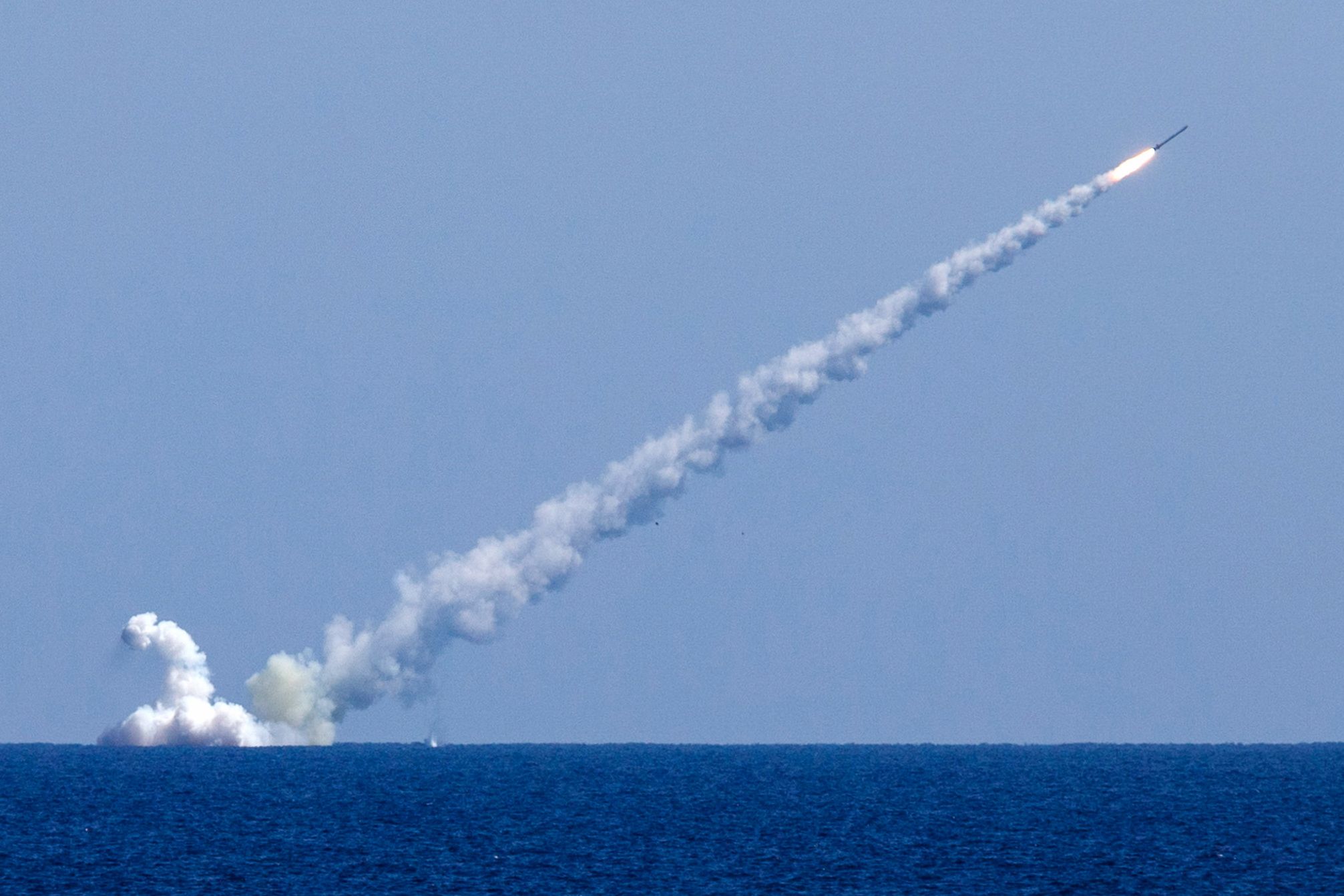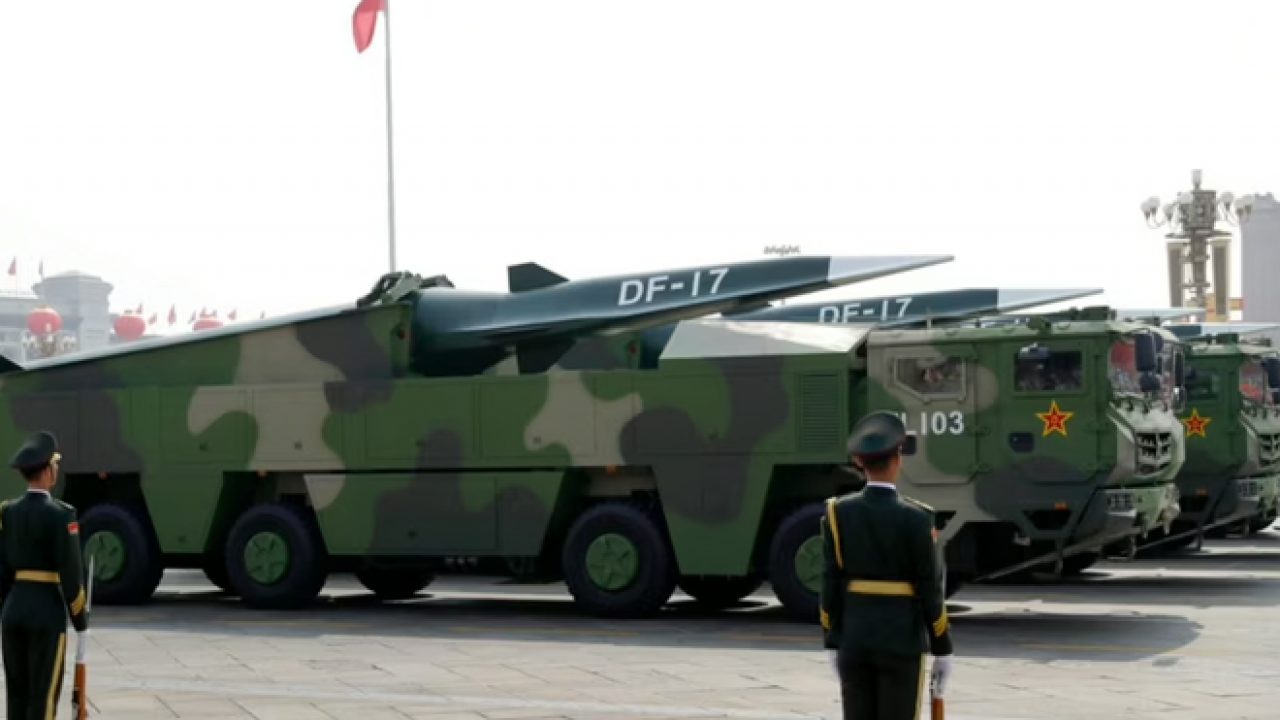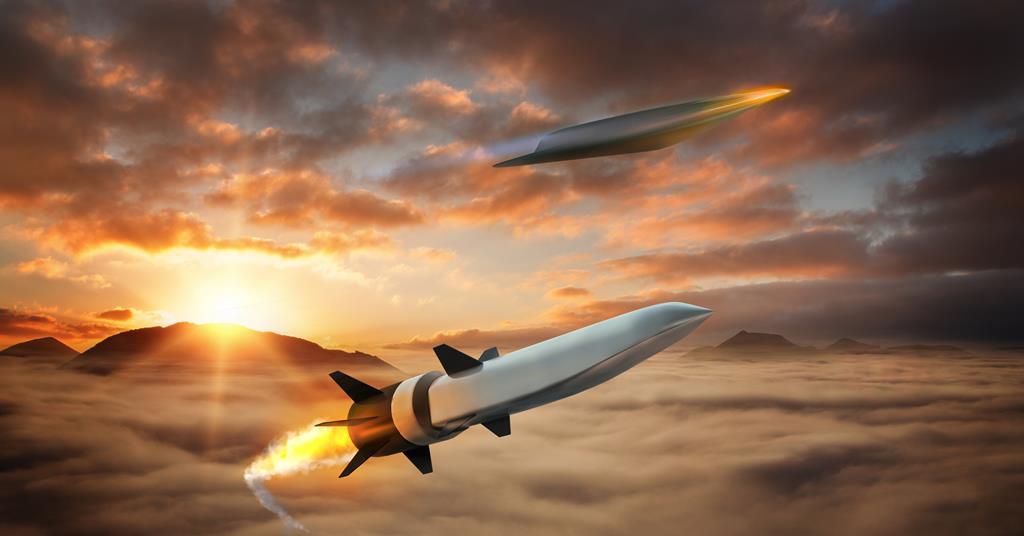Hypersonic Missiles Are Game Changers in Modern Warfare; China And Russia Have Them, But Not The United States; A New Arms Race Is Now Underway
The world of military technology has witnessed a significant advancement reshaping modern warfare – hypersonic missiles. These high-speed, manoeuvrable projectiles are proving to be game-changers in national security and defence.

The significance of hypersonic missiles has prompted major global powers to commit substantial resources towards gaining a strategic advantage in this arena.
A new arms race is now underway, with China, Russia, and the United States aggressively pursuing developing and deploying advanced hypersonic weapons; simultaneously, other nations are initiating or expanding their own hypersonic missile programs.
These formidable weapons, characterized by their exceptional speed, manoeuvrability, and extended ranges, pose profound questions for global security; hence, devising a strategy to manage the escalating competition for these capabilities has never been more critical.

The Arms Race
Japan and the United States have embarked on a collaborative effort to develop a novel missile system designed to intercept hypersonic weapons. These hypersonic missiles, often referred to as “game changers,” are currently under development by China, North Korea, and Russia.
Hypersonic cruise missiles (HCM) and hypersonic glide vehicles (HGV) can achieve speeds exceeding Mach 5, five times the speed of sound, and what sets them apart is their ability to execute unpredictable course changes, rendering interception exceedingly challenging.
Numerous countries, including Japan, are actively engaged in researching and developing hypersonic weaponry; however, China’s technological advancements in this field are widely regarded as the most advanced on a global scale.
What exactly is a manoeuvring hypersonic missile, and why is there significant concern surrounding its potential utilization?
These missiles are equipped with powerful engines capable of achieving speeds ranging from 5 to 6 times the speed of sound.
Speculation suggests that the Russians may have successfully addressed the inherent challenges related to managing the intense heat generated during flight, ensuring the durability of engine components under extreme temperatures and pressures, and effectively managing control and navigation problems.
This progress has possibly led to the development of a hypersonic missile that can reach a staggering speed of Mach 10; moreover, in addition to their exceptional velocity, hypersonic missiles possess impressive range capabilities and the ability to execute controlled flight and manoeuvres.
In contrast to ballistic missiles, which follow a predetermined ballistic trajectory and have limited manoeuvrability en route to their targets, hypersonic missiles can adjust their path during flight, enabling precise navigation until they reach their intended destinations.
This distinct characteristic significantly enhances their accuracy and makes them far more challenging to intercept; hypersonic missiles can carry nuclear warheads, further intensifying concerns about their deployment.

There are two primary types of manoeuvring hypersonic missiles:
Hypersonic Glide Vehicle (HGV), also known as Tactical Boost Glide (TBG): This type of hypersonic missile is typically launched from either a strategic or tactical ballistic missile platform. Initially, it gains velocity from the ballistic missile or the aircraft that carries it.
Once it reaches an altitude of approximately 80,000 feet, it accelerates to an astounding speed, often within the Mach 20-25 range. Subsequently, it glides over long distances while maintaining precise navigation and manoeuvring capabilities toward its target.
This mode of operation, coupled with its high velocity, renders the hypersonic glide vehicle exceedingly difficult to detect and intercept, primarily due to the limited time available for interception.
Hypersonic Cruise Missile (HCM): This is a sophisticated missile that combines the acceleration capabilities of a ballistic missile with the manoeuvrability of a cruise missile, thanks to its powerful engine.
Typically, HCMs are launched from aircraft. For example, the American AGM-183-ARRW hypersonic missile, which is carried by B-52 bombers, can achieve speeds of up to 6,200 km/h. Unlike the ballistic trajectory of some hypersonic missiles, these air-breathing missiles utilize ram-jet or scramjet engines.
These engines operate by drawing in air at high pressure and supersonic speeds, thereby providing the necessary oxygen for combustion.
This unique propulsion method allows the missile to reach high speeds, often exceeding Mach 5, for short periods, significantly increasing its effectiveness.
However, due to the absence of an onboard oxidizer and turbine compression, HCMs are limited in their flight altitude to around 60,000 feet and their operational range.

Leading Countries in Hypersonic Missile Development
The importance of hypersonic missiles has led major global powers, often referred to as superpowers, to invest substantial resources in the development and advancement of hypersonic systems, as well as in the creation of defense mechanisms to counteract them.
Among these superpowers, the United States, Russia, and China are at the forefront of this technological race, each with its own unique developments and ambitions.
United States
The United States began exploring hypersonic missile technology as early as 2000, with plans centred around developing attack scenarios; however, these efforts encountered delays due to various reasons presented by Congress in 2013 and 2014.
The urgency to accelerate research and development of hypersonic missiles and associated defense systems, such as the Glide Breaker system, became apparent as Russia and China rapidly progressed in this domain.
In June 2019, the United States unveiled the AGM-183A ARRW hypersonic glide missile, which was observed mounted under the wing of a B-52 bomber. Some estimates suggest this missile can achieve speeds of 6,200 km/h, although it has encountered technical challenges in its operational deployment.
The planned budget for the period between 2020 and 2025 for hypersonic weapon development was doubled from $6 billion to $11.2 billion.
Organizations such as DARPA, the U.S. Army, and the U.S. Air Force are leading this American effort, aiming to create a consortium of industries to produce a substantial number of hypersonic missiles.
These include low-range hypersonic weapons (LRHW) for long-range strikes, tactical and strategic targets, air-breathing hypersonic missiles, tactical boost glide missiles (TBG), and hypersonic air-breathing cruise missile systems for various platforms, including the F-15EX fighter aircraft and ground-based installations. Additionally, the U.S. Navy has committed $2.5 billion to Lockheed Martin for hypersonic missile development.
Furthermore, the U.S. Department of Defense, in collaboration with Australia’s Hypersonix, is working on an advanced “breathing” missile prototype that utilizes a unique ramjet engine capable of reaching Mach 7, around 8,400 km/h.
This engine is fabricated using 3D printing technology, reducing production time and costs. Special metals and advanced coatings are employed to withstand the high temperatures generated during engine operation, critical for trajectory control.

Russia
Russia stands as a pioneer in the development and operational integration of hypersonic missiles, outpacing the initial estimations of other countries.
The performance of Russian hypersonic missiles was prominently demonstrated during the conflict in Ukraine, where these advanced weapons showcased their capabilities compared to conventional cruise missiles.
The Kinzhal missile, launched from a MiG-31 fighter aircraft, has been touted by President Vladimir Putin as traveling at speeds of approximately 12,000 km/h (although disputed by experts), with a range of over 1,250 km (or possibly 2,000 km according to Russian sources), and the capability to carry both conventional and nuclear warheads.
Due to its remarkable speed and maneuverability, the Kinzhal poses significant challenges for detection and interception.
Moreover, Russia has revealed the 3M22 Zircon, a hypersonic missile designed for naval targets, boasting speeds of Mach 8 and a range of 400 km.
The missile can be launched from a TU-22 bomber or a missile ship. Another notable Russian achievement is the Avangard, a glide vehicle launched from a ballistic missile, which became operational in 2018, reaching distances of approximately 6,000 km.

China
China embarked on an ambitious pursuit of hypersonic weapon technology in the early 21st century, achieving operational capabilities as early as 2014.
The nation’s strategic focus involves the development of various hypersonic technologies, including glide missiles and HAWC missiles, aimed at challenging U.S. bases, ships, and aircraft carriers in the Pacific Ocean.
One of China’s medium-range hypersonic glide vehicles is the Dong Feng 17 (DF-17), boasting speeds between Mach 8 and 12 and a range of 1,800-2,000 km. The DF-17 incorporates a unique cross-sectional shape, optimizing aerodynamic performance and maneuverability at varying speeds.
China has also unveiled the DF-ZF missile, a glide vehicle with nuclear warhead capabilities, launched from a ballistic missile. This missile travels at speeds ranging from 6,000 to 12,000 km/h, with a range of approximately 3,000 km. Additionally, the DF-41 intercontinental ballistic missile can carry hypersonic glide vehicles, extending their range to 14,000 km.
Another Chinese hypersonic missile in development is the Starry Sky-2, designed to achieve operational status by 2025.
Notably, in July 2021, China displayed impressive capabilities by launching a hypersonic missile on a circular trajectory around the Earth, indicating both precision and versatility.
While China may lag behind the United States in some aspects of hypersonic technology, the nation is making significant strides to bridge the gap through extensive research and development efforts.

Iran’s Hypersonic Ambitions
Russia’s advancements in hypersonic technology and its military alliance with Iran raise concerns about the potential for Iran to acquire these missiles.
Iran has been actively researching and developing hypersonic technologies since 2014, and recent statements from Iranian officials suggest significant progress.
Hypersonic Missiles, Terror
1. Unprecedented Speed and Maneuverability
Hypersonic missiles are characterized by their remarkable speed, typically defined as Mach 5 (five times the speed of sound) or higher. This extreme velocity allows them to cover vast distances in a matter of minutes, reducing reaction times for defenses to a minimum.
Moreover, hypersonic missiles possess the ability to change trajectory and adjust their flight path in real-time, making them exceptionally difficult to intercept. Their combination of speed and maneuverability challenges traditional missile defense systems, which were primarily designed to counter slower, less agile threats.
2. Reduced Decision Time for Adversaries
The rapid speed of hypersonic missiles means that potential adversaries have significantly less time to detect, identify, and respond to incoming threats. This shortened decision time can overwhelm even the most advanced air defense systems.
In essence, hypersonic missiles force opponents into a defensive posture, as the window for effective countermeasures is dramatically reduced and this dynamic shifts the balance of power in favor of the nation possessing hypersonic capabilities.

3. Enhanced Precision and Lethality
Hypersonic missiles can carry a variety of payloads, from conventional explosives to highly specialized warheads. The combination of speed and precision enables them to strike their targets with pinpoint accuracy, reducing collateral damage and maximizing their destructive potential.
Hence, they provide military forces with a surgical strike capability that was previously unattainable with conventional missile systems.
4. Extended Range
Hypersonic missiles have the potential to cover vast distances, allowing nations to project their military power beyond their immediate borders.
This extended range means that they can target adversaries and critical assets from a safe distance, reducing the need for forward basing and minimizing the risk to their own forces and this strategic advantage enhances a nation’s ability to deter aggression and respond to threats on a global scale.
5. Strategic Implications
The advent of hypersonic missiles has significant strategic implications. Nations possessing this technology gain a competitive edge in international relations and can use it as a deterrent to potential adversaries.
The mere presence of hypersonic capabilities can dissuade aggressive actions and promote stability; as a result, these missiles play a vital role in shaping the global geopolitical landscape.
The Last Bit, Hypersonic missiles are unquestionably game-changers in modern warfare. Their unprecedented speed, manoeuvrability, precision, extended range, and strategic implications make them a potent national security and defence tool.
As these missiles evolve and increase, they are reshaping how nations think about military strategy, deterrence, and power projection.
In a world where conflicts are becoming increasingly complex and unpredictable, hypersonic missiles are emerging as a crucial component of a nation’s defence arsenal, ensuring that they remain prepared and capable of responding to a wide range of threats.




